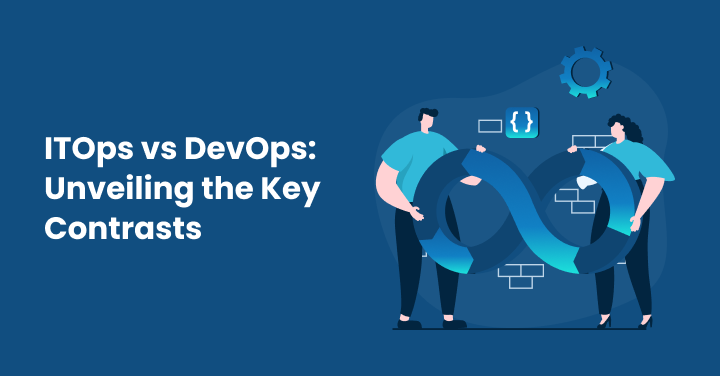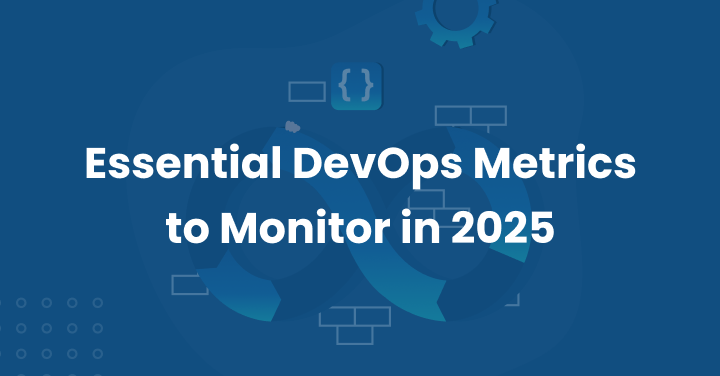A combination of development and operations, DevOps is an efficient approach that is quickly replacing the traditional model of software development. The approach utilizes team collaboration, automation, fast feedback and iterative improvement to speed up the software development process.
In software engineering, a term that’s often confused with DevOps is DevSecOps.
DevSecOps comes with the added benefit of extra security. The approach utilizes numerous tools and processes to integrate security into every stage of the software development process.
It is important for development teams to transition to DevSecOps, as it has initiatives to write code emphasizing security.
Understanding the Shift: DevOps vs. DevSecOps
DevSecOps integrates the concept of security testing into DevOps. Prioritizing application and infrastructure security throughout the development process encourages a more efficient testing process. The approach detects vulnerabilities, ensures adherence to regulatory requirements and helps development teams become aware of security best practices.
Core Principles of DevOps
DevOps has several core principles that software teams have to follow. Here are four major ones:
- Collaboration: By fostering collaboration and communication, DevOps eliminates the concept of silos that exist in traditional software teams.
- Automation: Critical processes being automated speeds up the entire development process and improves the time-to-market.
- Continuous Feedback and Improvement: Each software release and environment update produces data logs, metrics and user feedback. This data is analyzed and integrated into the subsequent sprints to meet evolving user requirements.
- Shared Responsibility: The DevOps approach requires the collaboration of the operations and development teams. This shared responsibility creates a sense of ownership and direction of working towards the same goal.
How DevSecOps Extends DevOps
DevSecOps injects the concept of security as development moves from one stage to another.
Security practices, like threat modeling, code analysis, and vulnerability scanning, are integrated within CI/CD pipelines, identifying issues and fixing them as and when they happen. This key principle is known as the “Shift Left Security,” referring to the security process that happens in the earlier stages of development.
Security as a Shared Responsibility
The security of the software in development is a shared responsibility. This is unlike traditional models where it was assigned to a single team.
The shared responsibility promotes better collaboration and sets the tone for faster iterations. It also assures that security issues are promptly fixed and the overall development process is completed on time.
Key Challenges in Transitioning to DevSecOps
Migrating to the DevSecOps model has numerous benefits. But they often run into challenges that can disrupt the process.
Here are some of these challenges. It is important to note that they can be managed by partnering with a software product development company.
Cultural Resistance and Lack of Security Mindset
Cultural resistance is often the first and most common challenge development teams face when moving from DevOps to DevSecOps approach.
Developers and entire teams may be resistant to change from their usual methods. Some individuals see this cultural shift as something that pushes them away from regular and time-tested methods.
Some teams may consider integrating security practices early on in the development process as a hindrance.The team may feel the integration of security initiatives as a time-consuming process and that it will severely impact development. This development-focused mindset often stands against implementing the DevSecOps approach.
Toolchain Integration and Complexity
Effective implementation of DevSecOps measures demands knowledge of complex tools and strategies. Each tool or strategy has its own set of specifications, interfaces and protocols. Understanding and integrating them can be time-consuming and complicated.
Software development teams may not be willing to undergo training for these tools, assuming that they’d rather focus on development and let the security team handle the threat and risk detection initiatives.
Skill Gap in Security Automation
Automating security procedures requires the expertise of individuals skilled in cybersecurity and process automation. Training cybersecurity professionals in automation and vice versa can be time-consuming.
Collaboration among different teams is often the recommended course of action here. But teams may be against it due to the need to meet deadlines.
Siloed Teams and Lack of Collaboration
The traditional development approach promotes working in siloed teams rather than collaboration. This isolated approach and the unwillingness of development teams to stray from the traditional approach often hinder the development process.
Siloed teams are a threat to the entire development process. The lack of communication and collaboration often results in bugs and errors appearing in the later stages of development. The DevOps and the DevSecOps approaches offer a solution to this issue.
Compliance and Governance Hurdles
Maintaining regulatory compliance and governance across different teams involved is a difficult task. Inconsistencies here often lead to security issues. These issues can translate into development delays.
Staying updated with compliance and governance laws is another major challenge. Every time a new security danger emerges, the rules and regulations are updated. Cybersecurity experts may overlook incorporating the newest trends into the system, which would cause development delays.
Increased Pipeline Latency Concerns
Software teams often think that integrating security initiatives into the CI/CD pipeline can disrupt the development process. The assumption arises from factors such as the utilization of security tools, false positive management and handling large volumes of threat intelligence data.
Development teams also have tight schedules to meet. Having to undergo training on security initiatives, while having to keep up with daily workflow may not be a practical choice for some teams. In such situations, they will prioritize development over integrating security measures.
Best Practices for a Smooth Transition
The transition from DevOps is often considered to handle threats and speed up the overall development process. But it is a process that is easier said than done. Software teams will have to go through a series of drastic changes to be well versed with the DevSecOps model.
Here are some best practices that development teams should follow to shift to the DevSecOps model.
1. Start with Security Training for Dev and Ops Teams
Training the development and operations teams on security initiatives makes the transition a smooth one. The training usually involves sharing knowledge on the skills, strategies and tools essential to integrate security procedures into the workflow. Training is a time-consuming process but the end-results are beneficial to everyone involved, including the stakeholders and end users.
2. Embed Security Early
The Shift Left Approach embeds security early in the process rather than waiting for complete development. This approach ensures vulnerabilities and threat risks are dealt with in the initial stages of the process.
Embedding security early reduces the chances of delays in the development process. It also eliminates the need to make drastic, time-consuming changes to the code in the later stages of development.
3. Automate Security Testing
Automating the security testing process greatly enhances the efficiency of the procedure, improving verification checks, saving costs and speeding up the SDLC. Static application security testing and dynamic application security testing are two common approaches employed.
The former analyzes the source code for vulnerabilities before execution. The process is similar to an automated code review. The latter, dynamic application security testing, checks the application for vulnerabilities when the software is running.
4. Adopt Secure Coding Standards
Vulnerabilities are a byproduct of poor-quality code. They can be avoided if developers adhere to secure coding standards that prioritize software quality and security. Development teams should focus on input validation, data protection, error handling, and industry-recommended authentication and authorization procedures to ensure code quality. Automated analysis tools and code reviews are recommended in this regar.
5. Integrate Security Tools into CI/CD Pipeline
Specialized security tools like SonarQube, Checkmarx, Snyk, and Veracode simplify the implementation of security initiatives. They detect threats and vulnerabilities in every stage of development and improve the overall security and time-to-market of the application.
Additionally, these tools help in identifying and mitigating vulnerabilities early in the process and contribute to faster and secure deployments.
6. Monitor and Audit Continuously
Strict supervision and regular auditing helps in early threat detection. They offer development teams enough time to mitigate issues. Continuous monitoring and auditing also promote adherence to security standards. Continuous monitoring and auditing also streamlines operations, promotes better compliance, and speeds up incident response times.
7. Align Security with Agile and DevOps Workflows
Prioritizing software security through each stage of the development process promotes a culture focused on security that is beneficial to building a robust system. Implementing security measures also reduces the amount of manual effort required and maintains consistency. This security-focused approach can be achieved by moving security initiatives to the left, regularly optimizing processes that prioritize threat detection, and fostering a security-first culture.
Conclusion
It might be difficult for development teams to switch to the DevSecOps approach. They could require more training on automation or security measures, or they might be averse to change. Despite the difficulties, the transition to DevSecOps is possible if enough time and effort are put into it.
DevSecOps brings numerous benefits. It promotes team collaboration, eliminates silos, speeds up time-to-market. It also enhances the overall security of the software and data involved.
The benefits of adopting the DevSecOps approach are plenty. Implementing security measures in each product development stage enhances software quality.






